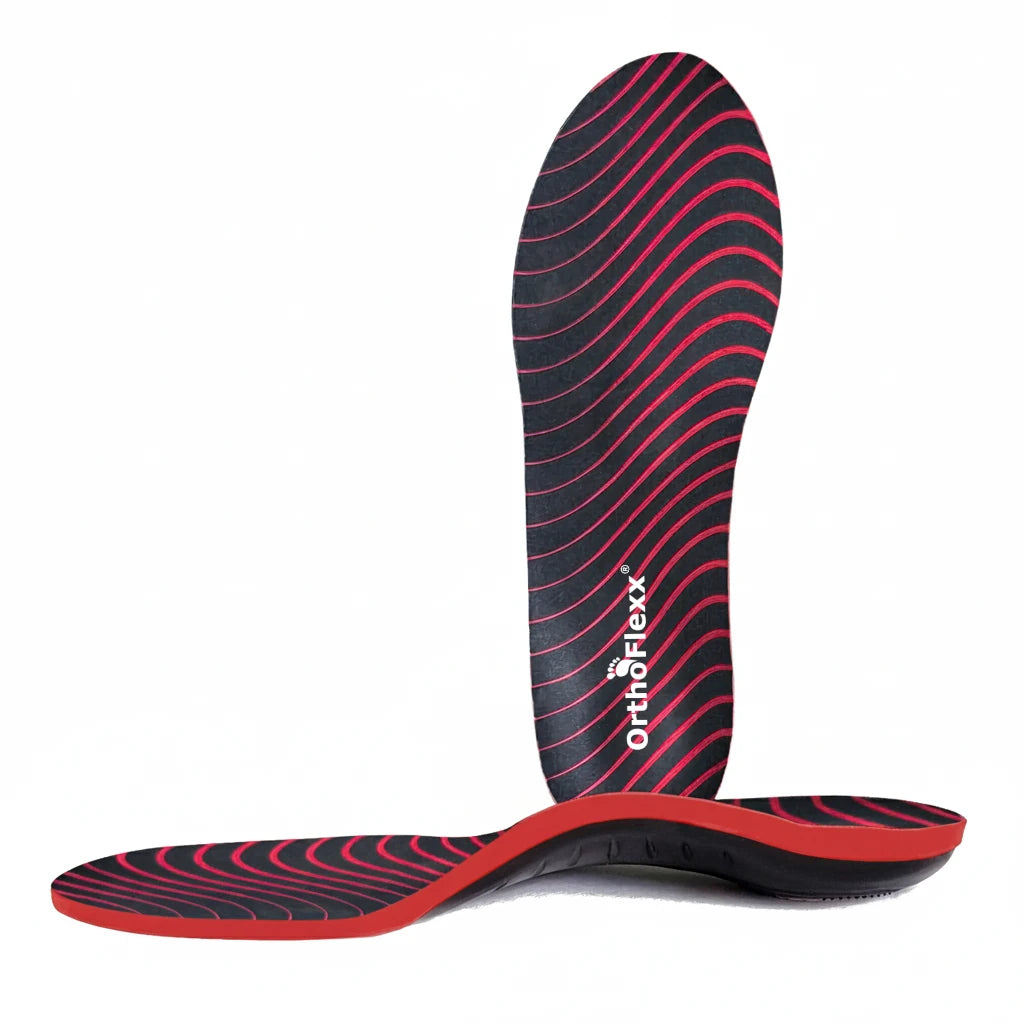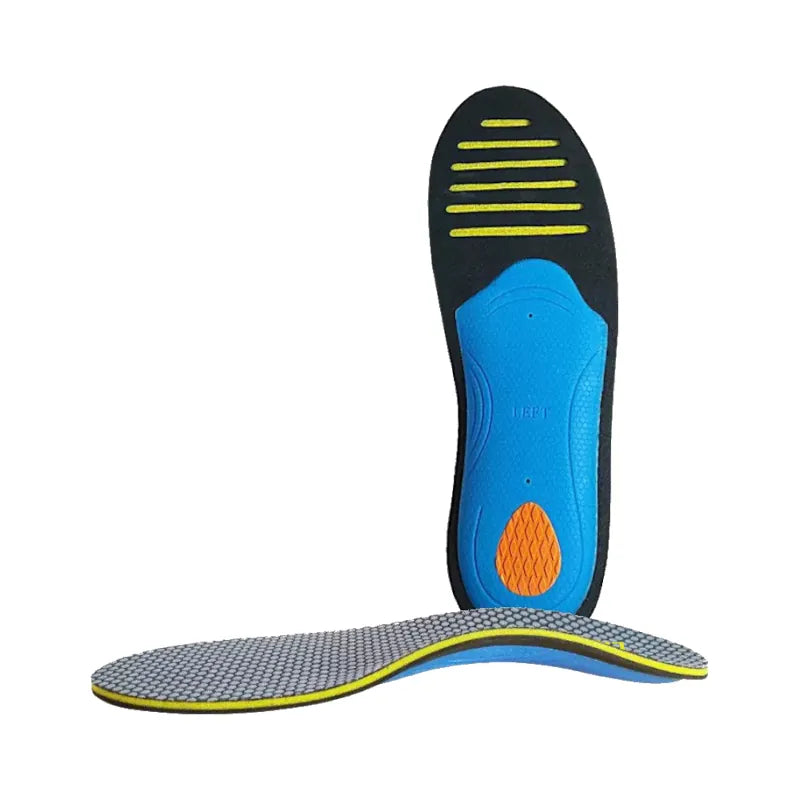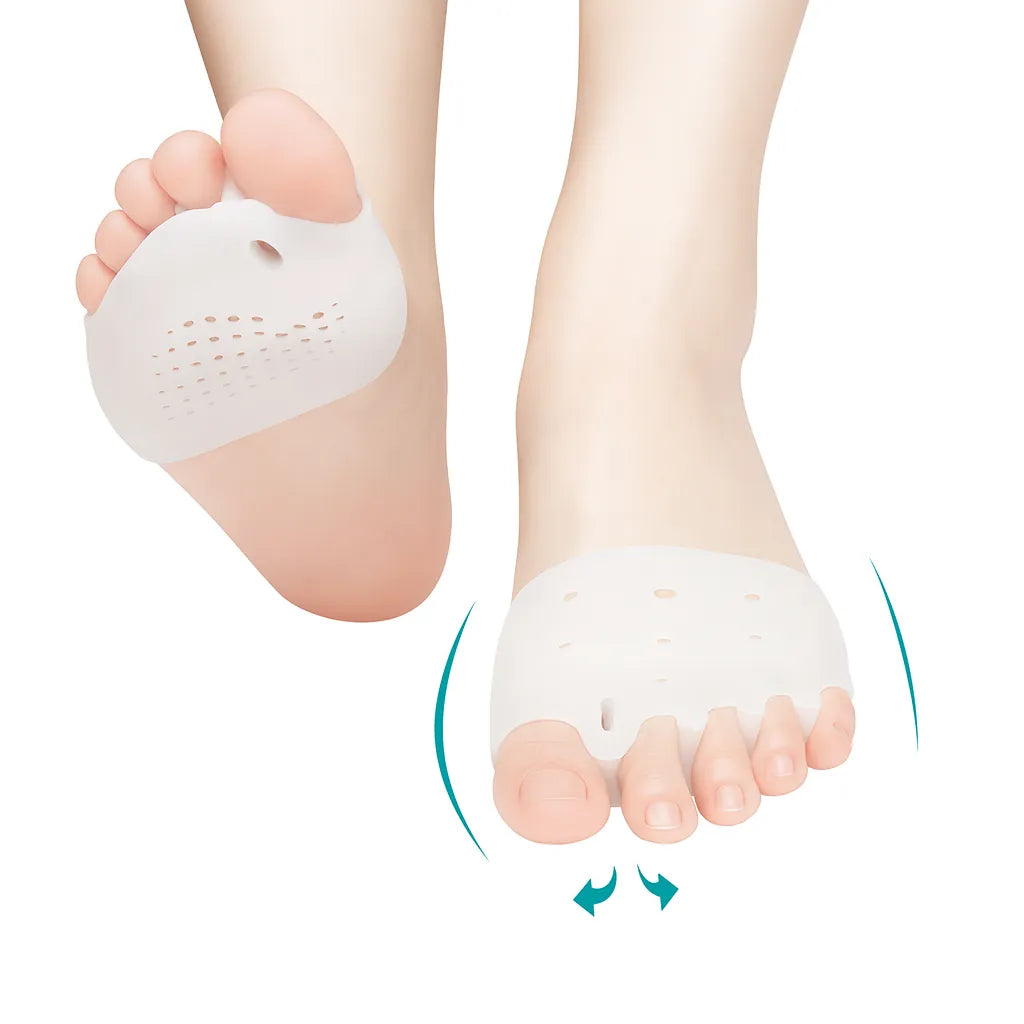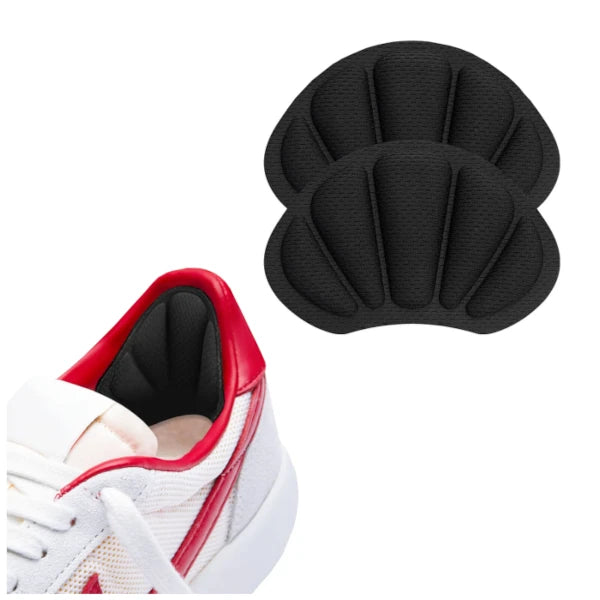
Sudden foot pain without injury - Should I be concerned?
Share
Introduction
Experiencing foot pain can be a highly unpleasant and disabling experience. It can hinder your ability to walk, stand, or even wear shoes, which can have a significant impact on your daily life.

Additionally, sudden foot pain without any apparent injury can be confusing and puzzling, as it may be challenging to identify the underlying cause of the pain.
Therefore, seeking medical attention is crucial to diagnose and treat the issue effectively.
Numerous factors can cause foot pain, and it's crucial to pinpoint the cause accurately for effective treatment.
Causes
As mentioned before, sudden foot pain can be a symptom of a variety of medical problems, besides traumatic injury. Let’s talk about some:
1. Osteoarthritis (OA)
What is it? Osteoarthritis occurs when joint cartilage wears down, causing bone-on-bone scraping, leading to pain, swelling, stiffness, and crunching noises in the affected joint(s). It may also cause instability while standing.
Treatment. The guideline advises exercise, self-management programs, and tai chi as initial treatments for OA.
Cognitive behavior therapy and balance training can also alleviate pain. Weight loss reduces joint strain.
Orthotics and insoles improve alignment and reduce symptoms. Physical therapy strengthens muscles, increasing joint stability and range of motion.
2. Bunions
What is it? A bunion, or hallux valgus, is a bony protrusion that forms on the side of the foot due to stress on the joint over a period of time.
It is often caused by wearing tight, pointed, and narrow toe box shoes, but can also be the result of arthritis or genetic factors.
This condition can cause sudden pain and compression of the digital nerve, making it difficult to wear certain shoes.
Treatment may include wearing comfortable shoes, using orthotics, taking pain medication, or in more severe cases, surgery.
Treatment. Surgery has been proven to be the only method to eliminate bunions, however, the symptoms like pain can be reduced by conservative treatments.
Nonoperative treatment of hallux valgus consists of symptomatic management with the goal of decreasing irritation of the medial eminence.
Insoles, arch supports, toe spacers and toe supports are many times recommended by doctors, besides well fitting shoes, due to their alignment correction function.
In some cases, medication is also reccomended. Invasive treatment is dependent on the level of pain and deformity.
3. Achilles Tendinopathy

What is it? Achilles tendinitis is an overuse injury of the Achilles tendon, which connects the calf muscles to the heel bone.
It causes inflammation and can result in soreness, swelling, and stiffness of the ankle and tendon, especially in the morning.
The pain typically starts as a mild ache in the ankle, heel, and calf and worsens with physical activity such as running or standing on tiptoes.
Athletes often continue to participate in sports but with reduced performance due to pain and weakened strength.
Treatment. To reduce pain from Achilles tendinitis, rest and elevate your foot. This condition often affects people who suddenly increase their physical activity.
To prevent injury, participate in a guided program with gradually increased intensity. Older people are more susceptible to Achilles tendinitis as the tendon weakens with age.
The goal of recovery is to regain calf muscle strength and improve the tendon's ability to handle loads.
Regular stretching and strengthening exercises are crucial to improve flexibility and reduce the risk of rupture.
Proper footwear can also help reduce impact and prevent injury to the foot, leg, and body.
4. Morton’s neuroma
What is it? Morton's neuroma, also known as intermetatarsal neuritis, is a foot condition that causes pain. It is a thickening of a nerve in one of the toes and can be aggravated by activity or pressure on the nerve.
Wearing high heels and narrow toe box shoes and prolonged walking are common factors that can cause this condition.
Symptoms include abnormal sensations like burning or numbness in the toe without any injury, and it may feel like something is under the foot when weight is applied.
Nighttime cramps are also common. Pain is usually felt in the forefoot, toes, or dorsal web space, and can limit footwear choices and weight-bearing activities.
Treatment. There are three stages of treatment for Morton’s neuroma: conservative (non-surgical interventions), non-conservative (infiltration and surgical interventions).
The first stage includes rest, Changing footwear to wider toe box and low heeled shoes.
Using foot orthoses and/or metatarsal pads elevating the metatarsal heads, Exercises for strengthening the arch of the foot, Stretching and soft tissue massage and Mobilization/Manipulation of the metatarsals.
If successful, swelling around the nerve may settle and symptoms will disappear at this stage.
If not, podiatrists will recommend the second stage – corticosteroid or sclerosing injections. The last stage is surgical intervention.
5. Heel Spurs
What is it? Heel spurs are abnormal bone growths in the heel caused by excessive pressure, which can result in acute pain, swelling, and limping.
The pain is usually most severe in the morning and gradually improves throughout the day, but can recur later in the evening or night.
Patients may also experience foot fatigue, discomfort, calf muscle pain, and cramps.
Treatment. Treatment usually includes rest and physiotherapy modalities such as massage, TENS, stretching and strengthening and heat therapy. Taking painkillers, muscle relaxants can sometimes be advised by doctors.
Proper footwear or shoe inserts that protect your plantar fascia should be done. Extracorporeal shockwave therapy and corticosteroid injections are the next line of treatment, followed by Surgery in more severe, prolonged conditions.
6. Plantar Fasciitis
What is it? Plantar fasciitis is caused by overuse or sudden strain on the foot's ligaments and tendons, leading to inflammation of the fascia and pain, which may be related to heel spurs.
Symptoms include severe pain on the bottom of the foot, around the heel and arch, especially when standing up after resting.
It is more common in people with flat feet, who spend long periods standing, overweight people, and those who walk or run with tight calf muscles.
Treatment. Treatment for this condition may involve rest or reducing physical activity levels, along with ice and anti-inflammatory medication.
Physical therapists may assist with stretching exercises for the Achilles tendon, gastrocnemius, and plantar fascia, and also provide supervision for strengthening exercises.
Manual therapy, which includes joint and soft tissue mobilisation, can also be used to enhance flexibility and decrease pain.
Doctors and physiotherapists often recommend footwear with good cushioning, shock-absorbing insoles, or orthotics such as heel pads, heel cups, arch supports, or night splints.
Successful treatment is indicated by a decrease in pain and an improvement in function.
Conclusion
If you are experiencing sudden foot pain without an injury, it is important to make an appointment with a podiatrist.
Seeking medical attention promptly can help with an accurate diagnosis and necessary treatment, allowing you to get back on your feet with minimal discomfort.
While there are things you can do at home to treat some ailments and reduce discomfort, it is important to seek medical attention right away if you are experiencing sudden foot pain without an injury.
Author Bio

Inês Pinheiro
Certified Physiotherapist for Shoulder and Knee Injuries
Inês is a skilled physical therapist with a special interest and extensive experience in working with athletes, specifically football players and also neurologic patients.
References
- Slocombe, D. (2021) Sudden foot pain without injury: 10 possible causes you should know, PainBalance.org. Available at: https://painbalance.org/sudden-foot-pain-without-injury/
- NHS choices. NHS. Available at: https://www.nhs.uk/conditions/tendonitis/
- Silbernagel, K. G., Hanlon, S., & Sprague, A. (2020). Current Clinical Concepts: Conservative Management of Achilles Tendinopathy. Journal of Athletic Training. doi:10.4085/1062-6050-356-19
- Godoy-Santos, A. L., Fonseca, L. F., de Cesar Netto, C., Giordano, V., Valderrabano, V., & Rammelt, S. (2020). Osteoartrite do tornozelo. Revista Brasileira de Ortopedia. doi:10.1055/s-0040-1709733
- Latt, L. D., Jaffe, D. E., Tang, Y., & Taljanovic, M. S. (2020). Evaluation and Treatment of Chronic Plantar Fasciitis. Foot & Ankle Orthopaedics, 5(1), 247301141989676. doi:10.1177/2473011419896763
- Yelverton, C., Rama, S., & Zipfel, B. (2019). Manual therapy interventions in the treatment of plantar fasciitis: A comparison of three approaches. Health SA Gesondheid, 24. doi:10.4102/hsag.v24i0.1244
- Ray, J. J., Friedmann, A. J., Hanselman, A. E., Vaida, J., Dayton, P. D., Hatch, D. J., … Santrock, R. D. (2019). Hallux Valgus. Foot & Ankle Orthopaedics, 4(2), 247301141983850. doi:10.1177/2473011419838500
- Our knowledge of orthopaedics. your best health. (no date) OrthoInfo. Available at: https://orthoinfo.aaos.org/ (Accessed: April 18, 2023).













